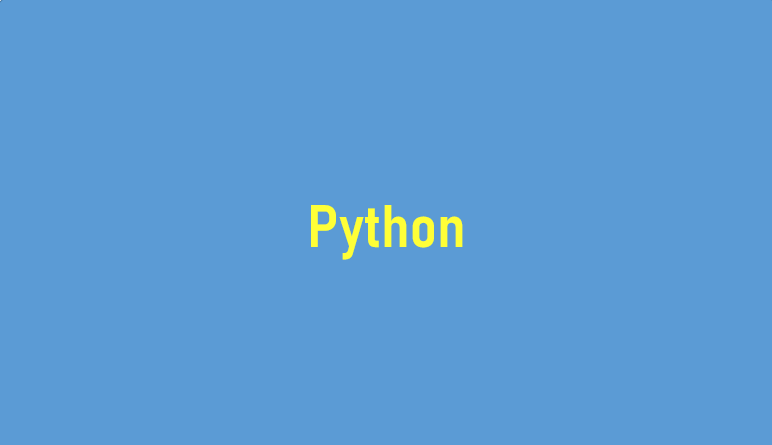
Data structure
데이터 구조란 데이터에 편리하게 접근하고, 변경하기 위해서 데이터를 저장하거나 조작하는 방법을 말합니다.
Program = Data structure + Algorithm
- 순서가 있는 구조
- 문자열
- 리스트
- 순서가 없는 구조
- 세트
- 딕셔너리
◾ 문자열
변경할 수 없고 (immutable), 순서가 있고(ordered), 순회가능하다(iterable)
조회 및 탐색
.find(x): x의 첫번째 위치를 반환합니다. 없으면-1을 반환합니다..index(x): x의 첫번째 위치를 반환합니다. 없으면 오류가 발생합니다.
값 변경
-
.replace(old,new[,count]): 바꿀 old 글자를 new로 바꿉니다. [count]만큼 시행합니다.'wooooowoo'.replace('o', '', 2) >>> 'wooowoo' -
.strip([chars]): 특정문자를 지정하면, 양쪽을 제거하거나 왼쪽(lstrip), 오른쪽(rstrip)을 제거합니다. -
.split(): 문자열을 특정단위로 나누어리스트로 반환합니다. -
'separator'.join(iterable): 반복가능한(iterable) 컨테이너 요소들을 separator로 합쳐서문자열로 반환word = '배고파' words = ['안녕', 'hello'] '!'.join(word) >> '배!고!파' ' '.join(words) >> '안녕 hello'
문자변형
.capitalize():앞글자를 대문자로!.title(): 공백이후의 문자를 대문자로!.upper(): 모두다 대문자로!.lower(): 모두 소문자로!.swapcase(): 대문자는소문자,소문자는대문자
◾ 리스트
변경가능하고 (mutable), 순서가 있고(ordered), 순회가능한(iterable)
값 변경
-
.append(x): 리스트에 x값을 추가합니다. -
.extend(iterable): 리스트에 iterable(list, range, tuple, string) 추가!!cafe = ['커피','우유'] cafe.append('자허블') >> cafe = ['커피','우유','자허블'] cafe.extend(['마끼아또']) >> cafe = ['커피','우유','자허블','마끼아또'] #주의 cafe.extend('허브차') >> cafe = ['커피','우유','자허블','마끼아또','허','브','차'] -
.insert(i,x): i 위치에 x를 추가합니다 -
.remove(x): 리스트에서 x를 삭제합니다 -
.pop(i): 정해진 위치 i에서 값을 pop해줍니다
탐색 및 정렬
.index(x): x가 없으면 에러가 발생합니다..count(x): x의 갯수를 확인합니다..sort(): 정렬을 합니다. 원본을 변경시키며 반환하는게 없습니다.sorted(list)는 return존재.reverse(): 반대로 뒤집습니다.
리스트활용하기
vowels = 'aeiou'
words = 'Life is too short, you need python!'
result = [x for x in words if x not in vowels]
print(''.join(result))
>>> Lf s t shrt, y nd pythn!◾ 순회가능한 데이터 구조에 적용가능한 함수
iterable 타입 -
list,dict,set,str,btyes,tuple,range
map()
map(function, iterable )
순회가능한 데이터 구조의 모든 요소에 function을 적용한 후 그 결과를 돌려준다.
return 은 map_object 형태이다.
def cube(n):
return n**3
list(map(cube,[1,2,3]))
>> [1,8,27]filter()
filter(function, iterable)
순회가능한 데이터에서 function의 반환된 결과가
true인것들로만 반환한다.return 은 filter object이다
def odd(n):
return n%2
list(filter(odd,[1,2,3]))
>> [1,3]zip()
zip(*iterables)
복수의 iterable 객체를 모아
zip()해준다결과는 튜플모음으로 구성된 zip object 입니다.
girls = ['jane', 'ashley', 'mary']
boys = ['justin', 'eric', 'david','hou']
pair = list(zip(girls, boys))
>> [('jane', 'justin'), ('ashley', 'eric'), ('mary', 'david')]◾ 세트
변경가능하고, 순서가 없고, 순회가능하다. {}
값 변경
-
.add(x): 추가 -
.update(*iterable): 여러가지 값을 추가합니다.a = {'사과', '바나나', '수박'} a.update({'토마토', '토마토', '딸기'}, {'포도', '레몬'}) >> {'레몬', '수박', '사과', '바나나', '딸기', '포도', '토마토'} -
.remove(x): x 삭제. 없으면 에러 -
.discard(x): x 삭제. 없어도 에러발생하지 않음 -
.pop(): 팝해준다.
◾ 딕셔너리
변경가능하고, 순서가 없고, 순회가능하다.
{key:value}
조회
.get(key [,default]): key를 통해 값을 가져옵니다. 없으면 default를 만듧니다..keys().values().items()
값 변경
.pop(key [,default]): key가 딕셔너리에 있으면 제거하고 그 값을 돌려줍니다. 없으면 에러발생. 그래서 deafult 정의해야한다..update(): 값을 제공하는 key value로 덮어씁니다.
활용
-
리스트가 주어질 떄, 각각의 요소의 개수를 vaule값으로 갖는 딕셔너리를 만드세요.
book_title = ['great', 'expectations', 'the', 'adventures', 'of', 'sherlock', 'holmes', 'the', 'great', 'gasby', 'hamlet', 'adventures', 'of', 'huckleberry', 'fin'] title_counter = {} for title in book_title: title_counter[title] = title_counter.get(title, 0) + 1 >> {'great': 2, 'expectations': 1, 'the': 2, 'adventures': 2, 'of': 2, 'sherlock': 1, 'holmes': 1, 'gasby': 1, 'hamlet': 1, 'huckleberry': 1, 'fin': 1}
